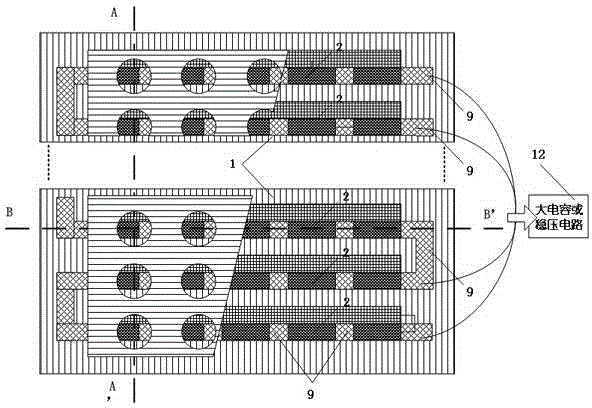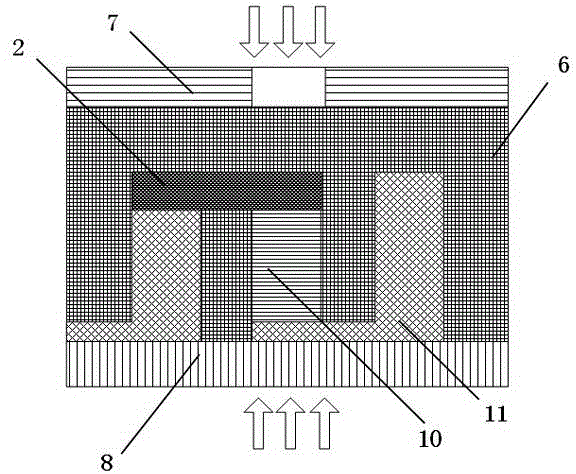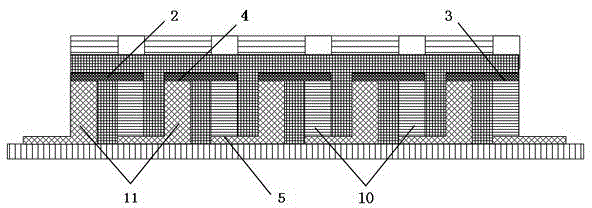Gallium-arsenide-based thermoelectric-photoelectric micro sensor in self-powered radio frequency transceiver module
A micro-sensor, radio frequency transceiver technology, applied in radiation control devices and other directions, can solve problems such as energy loss obstacles, and achieve the effects of reducing power consumption, improving power supply capacity, and enhancing heat dissipation performance
- Summary
- Abstract
- Description
- Claims
- Application Information
AI Technical Summary
Problems solved by technology
Method used
Image
Examples
Embodiment Construction
[0014] The gallium arsenide-based thermoelectric-photoelectric microsensor in the self-powered radio frequency transceiver assembly of the present invention is composed of a plurality of sensors 1 arranged in parallel, and the sensor 1 is composed of a plurality of thermocouples connected in series through metal wires 9 . The main part of the thermocouple is composed of an N-type gallium arsenide semiconductor arm 10 and an Au metal arm 11 . Doped P-type gallium arsenide is used to form the top connection line 2 of the semiconductor arm 10 and the Au metal arm 11 . The connection line 2 and N made of P-type gallium arsenide + The doped gallium arsenide forms the PN junction 3 . The connection wire 2 forms an ohmic contact with the Au metal arm 11 as the cold end 4 of the thermocouple. The semiconductor arm 10 forms an ohmic contact with the metal wire 9 as the hot end 5 of the thermocouple. The sensor 1 is based on a gallium arsenide substrate 6 . Below the gallium arsenid...
PUM
 Login to View More
Login to View More Abstract
Description
Claims
Application Information
 Login to View More
Login to View More - R&D
- Intellectual Property
- Life Sciences
- Materials
- Tech Scout
- Unparalleled Data Quality
- Higher Quality Content
- 60% Fewer Hallucinations
Browse by: Latest US Patents, China's latest patents, Technical Efficacy Thesaurus, Application Domain, Technology Topic, Popular Technical Reports.
© 2025 PatSnap. All rights reserved.Legal|Privacy policy|Modern Slavery Act Transparency Statement|Sitemap|About US| Contact US: help@patsnap.com



